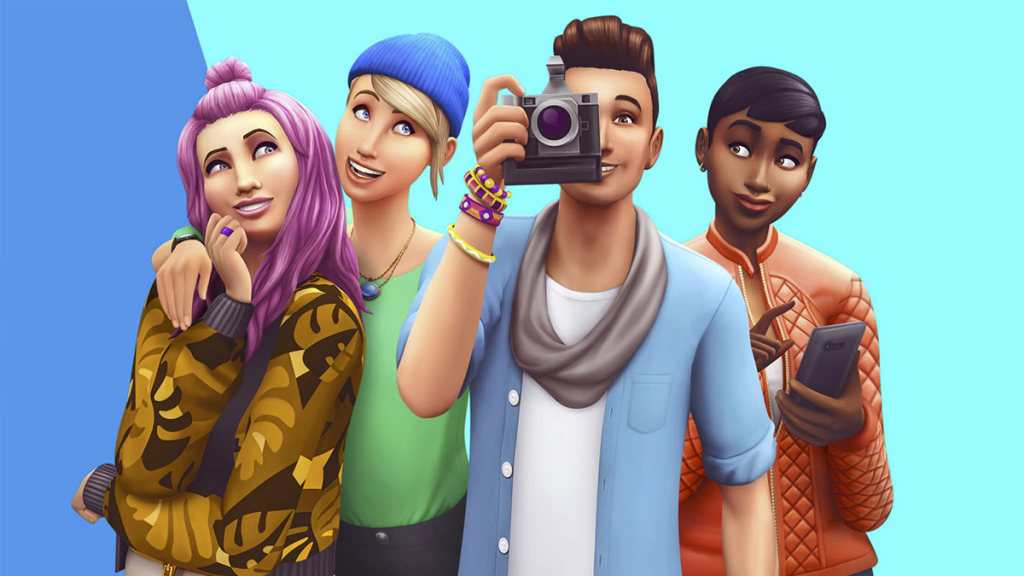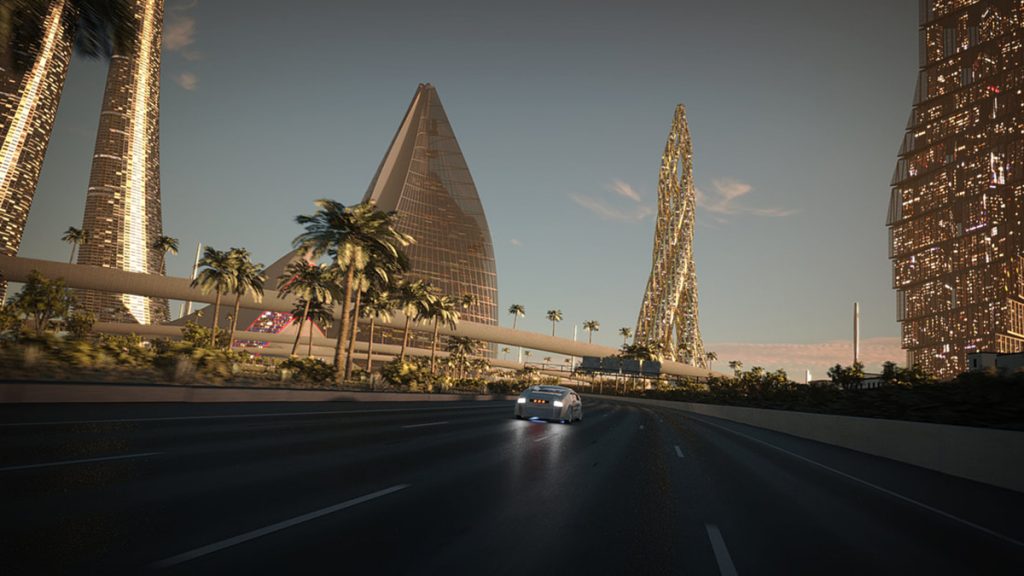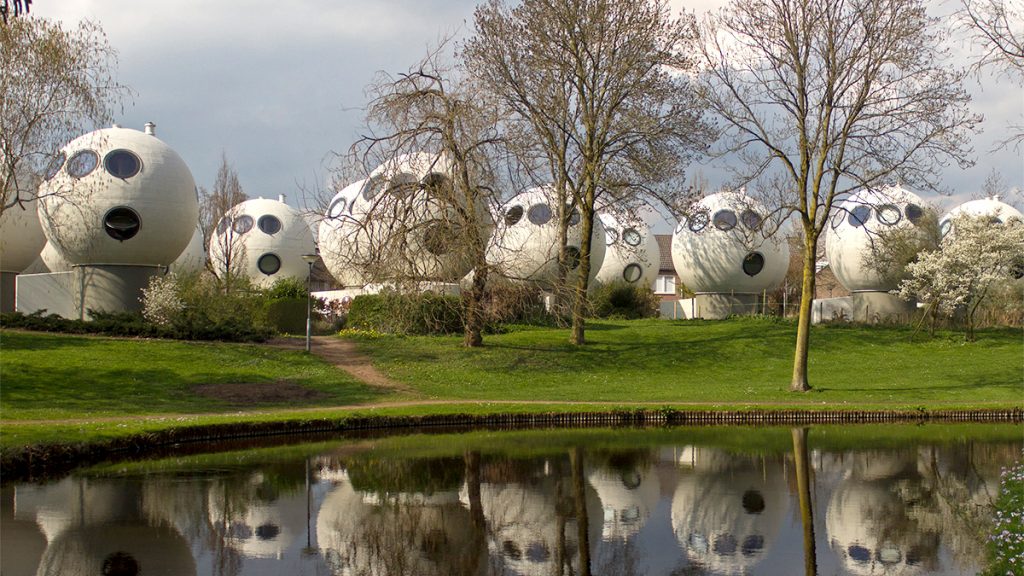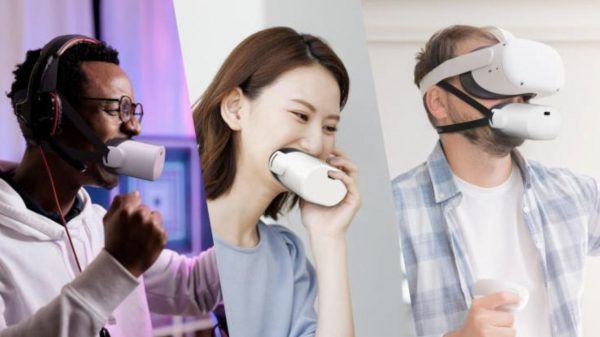Maslow‘s Hierarchy of Needs crops up in most of the science fiction canon and future gazing novels that we’ve read in the last ten, 20, maybe 30+ years (depending on your age). Prior to 1943, writers had already dreamed up new anchor points, homebases, and worlds that breathe (sometimes through gills, sometimes through apparatus) through writers like HG Wells, E Doc Smith, Isaac Asimov, Arthur C Clarke, and it’s no surprise that we’re gearing up for where we might live in the future, today. Is it in bubble houses (Bolwoningen) or is it on the International Space Station?
Regardless of where we will eventually live, Maslow‘s Hierarchy of Needs starts at the bottom of the pyramid with physiological requirements we require: food, water, warmth and rest. Well, I’ll talk about those at another time. What I am quite interested in is the next level up in the pyramid: the security and safety of being – and that’s before we can find everything else that’s in the Hierarchy of Needs, from belongingness and love to esteem and self-actualisation. Having a roof over our head is one of the most basic needs, and so we have looked to the future to answer the questions we have about the metaverse.
As the future races ever closer and feasible to what we dream of and aspire to be, architecture and holo-dreams or a huge part of our personal universe can occur within the metaverse itself. As I write this article I am building my own space within Decentraland, which though not for me, is a cool spot for hanging out with a community I’m involved in.

However, the metaverse enables us to flex the muscles of that pagan-techno-utopianism within the universe that we couldn’t before the 1980s/1990s, and makes us more curious about our role in it. In truth, we’re less pagan these days (mostly) and more agnostic. That weird moment in Men in Black where we all figured out that a universe could fit into a cat’s collar got me thinking. What if we approach this as Maslow‘s Hierarchy of Needs? We have to take into account all of those layers within the pyramid and which does include belongingness and love, esteem and self-actualisation: in the metaverse we are trying to perfect this version of ourselves and our world, that we can control, in our own agenda.
In 1989, the Taisei corporation in Tokyo proposed an underground urban concept. It was split into three primary sectors: town space, office space, and infrastructure space accessed by an underground railway system from the hub called Alice Terminal. The complex was presented as being the first in a potential chain of similar structures. The bonus was that by moving the habitable infrastructure underground, there was an abundance of free space above ground for redevelopment into parks and green places.
In 2021, that seems like a pagan-techno-utopia that we’re building above ground called Smart Cities. Alice City was never built, but that didn’t stop the dreamers from dreaming. One of the many disadvantages of Alice City, particularly – and other underground cities – was in surviving the event of fire or a similar disaster.
In today’s world we don’t actually need structures to be able to truly live in smart cities anymore, do we? While they exist in the physical sense, smart cities are fully connected and realised in the way that Alice City was described: everything is adjacent or in close proximity to everything else, to reduce everything from commuting carbon consumption to over-consumerism where we feel that our spare time has to be filled with stuff and things. We can still do those things in the physical world if we want to, but currently in the digital sense we have everything at our fingertips to be able to build the perfect world that we want to live in.
So how do we make a start? We dream, we reference, we design, and we build. We don’t need building contracts, codes, and megastructures to build our own. But we do need imagination and great tools. I love to harp on about the real estate in Second Life, Kaneva or Avakin Life which provides intrinsic and extrinsic value for the self and for our community. It starts with Will Wright, probably. Using Maslow’s Hierarchy of Needs, Will Wright began working on The Sims – a tongue-in-cheek experience where, as gods of our avatars who are people without gods, we are able to play as the best version of us and live in a world which for the most part is free until those needs start to kick in.

What I love about Wright’s approach to building this world is his starting point, which echoes my points beautifully. He was inspired by 1977 architecture and urban design book, A Pattern Language, but more importantly Abraham Maslow’s 1943 paper ‘A Theory of Human Motivation’ and that well known hierarchy of needs, added to the satire of US consumer culture, some early game AI, and BOOM! – the metaverse is born somewhere between 1991 and 1997. But what’s missing in order to make this truly metaversal? Well, we are. I’m a strong advocate for utility in the metaverse – however we exchange or navigate, we should always follow the build-settle-trade methodology for accessing our nuanced self within a digital space.
The tools to help us understand how to build and scale come from the intricacies of server technologies, instancing, and aesthetics. I’ve covered the server tech to some detail in previous articles, but instancing comes from games and that is exciting. The combination of League of Legends quick-fire matchmaking to the scalable universe of Roblox or Minecraft means that digital real estate is affordable, sustainable, and scopetastic! But what about on the ground, in the actual touchpoints of our worlds? How might digital twins of real world objects and buildings enable us to give even more life and value to the metaverse?
CityEngine is a commercial 3D modelling tool which generates shapes within cities through a unique rule-based system, one might almost say gamified. Traditionally, building a 3D urban environment is very time-consuming resulting mainly from dimension and volume. Until recently, CAD software created shapes one-by-one, and that wasn’t sustainable in the long-term. Imagine a city as a tanker and then trying to turn it around in the Suez Canal: it’s time consuming, it’s not agile and in the long-term becomes more of an expensive waste of time than a helpful vision. As researchers analyse cities by computing 2D information in GIS (GIS only supports limited 3D shape generation like extrusion), think of CityEngine as a platform for BIM workflow which meets something like Furioos – whole cities and structures are planned with ease.

Then, take a start-up like VRBN who create like-for-like unpackable and repackable buildings (exterior and interior) for everyone from Transport Tycoon to the City of Gothenburg and this mini-mundus approach to the metaverse is way better than struggling with crappy building plotters and procedural generators. What VRBN provides is a mobile home for the metaverse and we can pack up or extrude whatever we want, wherever we want to. Isn’t that the nature of really smart cities? Well, we’re not gonna find that in the physical, but the utility of value, form, and possession is something that reflects that Hierarchy of Needs, so packing up our apartment or world is a key motivator for keeping that utility optimised.
It is at this point of design and development that we can be both digitally sustainable (by not wasting buildings/real estate/trees/objects that sit on a server doing nothing) and start to identify ourselves, however that evolves within whichever space is truly smart for us.
Using myself as an example, sometimes I want to communicate, sometimes I want to decorate or design, and other times I simply want to express my digital self. Most current metaverse technologies allow me to do that within their parameters and that’s not tenable in the long-term. How I feel right now about my party in Avakin Life is not how I’ll feel when I’m 50, even if the party is still going strong (a party I had in SmallWorlds in 2009 was still happening in 2018). When I go back to Second Life, I see a world stripped of what it was – people, buildings, fashion, activities – and it makes me return only fleetingly. From Habbo Hotel to Club Penguin, Poptropica and Kaneva these are only city engines of sorts that we’ve been able to construct and then pull apart and discard. When the removal guys came to take down my place in PlayStation Home, I had no way of keeping my possessions, my community, or my kudos.

Today, The Sims 4 is the closest to a lively clash of spirit and culture from visiting actual countries recreated for our pleasure, to living inside a book like Mo Dao Zu Shi, or Harry Potter – it’s alive and it will continue to be a fully realised and utilised space like Avakin Life where instances generate at the behest of the player, not the megacorp. What I enjoy about the metaverse is the creativity that it allows location and living, but it’s still quite limited. When building the Bolwoningen, Dries Kreijkamp said that he wanted to create “the optimal experience of nature in all its facets” and I want to do the same with spatial and temporal digital objects in the metaverse – and I can, but it means that the techno agnostic in me is going to have to be a little more nomadic, for a while at least.
Kelly lives and breathes everything Beyond Games as a futurist and self-described creative badass. And as an experienced game developer, she's worked on titles such as Tomb Raider, Halo 3 and Candy Crush.






































